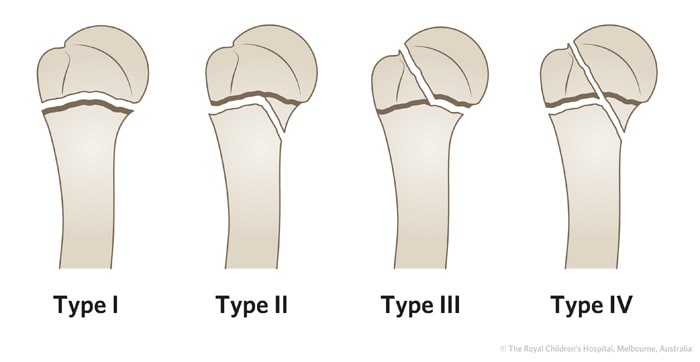We hope you love the product we recommend! Just so you know, at no extra cost to you, we may get a small commission for purchases made through links in this post. Your support is appreciated. Enjoy the read!
Finding comfort while sleeping after major shoulder surgery is quite a hurdle in itself.
Shoulder surgery, in particular, limits the movement of the body, which makes it difficult to get a good night’s rest.
Here’s the best position to sleep after shoulder surgery and 10 tips for a speedy recovery!
The Anatomy of the Shoulder
The shoulders form one of the largest and most functional joints in the human body.
We are capable of shifting our shoulders through an extended range of motions, both simple and complex.
The extent of movement on our shoulders also affects the scope with which we can move our arms and neck.

The shoulder consists of the upper arm bone (humerus), which is attached to the shoulder blade (scapula) like a ball and a socket.
The two are reattached rather loosely to allow for smooth movement, but this also makes the shoulder joint prone to injury.
Apart from these main components, the shoulder also consists of the collar bones (clavicle) that meet the shoulder blade at the bony projection (acromion).
This is called the acromioclavicular joint.
On the exterior of this skeletal formation, we can find the rotator cuff, which is a collection of muscles and tendons that wrap around the shoulder.
As the humerus is loosely attached to the scapula, the rotator cuff muscles help to keep the two attached securely.
Joints are made easy for movement with the help of the joint capsule, a fluid-filled sack that is responsible for lubricating the joints.
4 Common Types of Shoulder Problems
Shoulder surgery may be required for a wide range of injuries caused to the shoulders.
1. Fractured Collarbone & Acromioclavicular Joint Separation
When people suffer from a severe fall on their sides, they usually fall victim to a broken collarbone.
When the ailment worsens to displace the acromioclavicular joint (where the collarbone meets the shoulder blade), surgery is required to repair the bone and joint structure.
2. Fractured Head of Humerus
 When people fall flat on their chest with their arms stretched out, it can result in the fracture of the head of the humerus (bone of upper arm).
When people fall flat on their chest with their arms stretched out, it can result in the fracture of the head of the humerus (bone of upper arm).
The condition is more likely to affect older people who have osteoporosis because of their brittle bones.
3. Instability
Instability of the shoulder occurs when the humerus gets detached from the shoulder socket. The injury may be sudden or due to the gradual overuse of shoulder ligaments.
There is partial dislocation and complete dislocation, where the bone slips out of the shoulder pocket entirely.
Chronic instability results in frequent displacements, which requires surgery.
4. Rotator Cuff Tears
Due to heavy lifting, extensive movement, or sudden falls, all the muscles that wrap around the bone structure of the skeleton may be prone to injury.
When tendons rub against the shoulder blade, it causes impingement and rotator cuff tears.
The condition is quite painful but is usually treated with non-surgical treatments. Surgery is required when pain persists.
4 Common Types of Shoulder Surgery
Shoulder surgery is required mostly for severe damage caused to the shoulder bones, muscles or tendons as a permanent solution.
1. Rotator Cuff Surgery
One of the most common causes of shoulder surgery is damage to the rotator cuff muscles and tendons.
This surgery is usually carried out when there is excess pain in the tendons attached to the shoulder blade.
When the pain lingers for longer than a few months, surgery is required.
- A partial tear is fixed by trimming or smoothing the tendon, in a procedure called debridement.
- A complete tear will require the re-attachment of the tendon to the upper arm bone (humerus).
The re-attachment is carried out by stitching the tendon to its original site.
2. Open Surgical Repair
A fractured head of the humerus is treated with the help of open surgical repair.
During this procedure, an incision is made onto the shoulder for a better view of the injury.
This method is a traditional one and is widely used in cases where damage is more than usual.
The open surgery can also include additional reconstruction.
3. Arthroscopy
 An arthroscopic procedure involves the insertion of a pencil-thin device into a small incision on the shoulder.
An arthroscopic procedure involves the insertion of a pencil-thin device into a small incision on the shoulder.
This device is equipped with a small lens and lighting system, which are showcased on a small screen, meant to provide a better view for the surgeon.
Shoulder arthroscopy is done to fix injuries like shoulder dislocation, shoulder blade fractures as well as rotator cuff injuries.
4. Acromioclavicular Joint Surgery
The acromioclavicular joint is the meeting point of the shoulder blade and the collar bone.
The surgery for repairing damage to this joint involves removing the end or restoring the positioning of the clavicle to enable the joint to move freely again.
10 Rotator Cuff Surgery Recovery Sleeping Tips
Sleeping after a rotator cuff surgery comes with its own set of limitations. During the recovery process, stick to these tips to help you sleep better.
1. Sleep in a Reclined Position

For this, you can invest in a recliner or a couch capable of being converted to a recliner.
You can also prop up some pillows around the head of the bed to create an inclined position.
This will also help you prevent turning over unconsciously while sleeping.
2. Invest in an Incline Wedge
If you are finding it difficult to purchase a recliner chair or sleep in the reclined position, you can invest in a 45-degree incline wedge.
When placed at the head of the bed, it forms a comfortable reclined position.
Here’s the best wedge pillow after shoulder surgery.
3. Wear your Sling while Sleeping
When we sleep, we are not usually aware of how much strain we may be putting on our arms and shoulders.
Wearing your sling after surgery and while sleeping will help to keep the arm stable during the healing process.
Doing so will also prevent you from awkwardly positioning your arm.
4. Support the Arm with a Pillow
While sleeping, it is possible for your arm to fall back and rest in an uncomfortable position.
When the arm is positioned in an unstable manner from the shoulder, it can cause excess strain and result in pain.
While sleeping, rest a pillow under the arm to support the shoulder.
5. Use a Cryocuff AKA Iceman

This device uses cold therapy to freeze your pain and distract you from any stinging or dull aches.
It’s advisable to change the water frequently, but you can leave it on until you fall asleep.
This might be overkill but it’s the best sling for rotator cuff surgery.
6. Try Home-made Cold Therapy
If you are unable to find a cryocuff or iceman, use a regular ice pack instead.
Wrap it in a towel, and leave it on your shoulder before sleeping.
7. Take your Doctor’s Advice
Address any personal discomfort and obtain advice from your doctor for pain.
Whether it be taking adequate rest or limiting the movement of the arm, the recommendations provided by your doctor should be followed diligently.
8. Talk a Walk
If your health allows, you can take a slow, leisurely walk once a day.
Walking is known to improve blood circulation in the body and speed up recovery.
9. Take Prescribed Medication
Never skip your medication.
Set alarms to remind yourself if you need to.
After surgery, the remedy prescribed to you is intended to ease your pain and quicken the recovery process.
10. Avoid Using your Elbow as Support
While shifting positions on the bed, avoid using your injured elbow as support to move around.
This will induce strain on your upper arm and cause pain to your shoulders.
The Best Position to Sleep After Shoulder Surgery
In the initial stages of your shoulder recovery process, you will be asked to sleep in a reclined position for up to 6 weeks after your shoulder surgery.
This position helps to avoid any discomfort and prevent further strain or injury.
After this period, you can resume sleeping on your normal bed.
Here are a few of the most common sleeping positions.
A) Sleeping in a Reclined Position
If you are fresh out of surgery and are recovering at home, your doctor will most likely have suggested you sleep in a reclined position.
The recline position will require you to have your head, neck, and back stay in a slightly upright position, while the hips and the legs lie horizontally on the bed.
The recline position is recommended so as to avoid further pain that is caused from lying down.
When we lie horizontally, several muscles are actively engaged, causing the shoulder muscles to take up unnecessary strain.
Pros
- Avoids excess pain after surgery
- Most optimal position for quick healing
- Prevents your shoulders and neck from developing strain
Cons
- None
Apart from getting used to the new sleeping position, there are no cons to sleeping in a recline position.
You may feel slight discomfort for the first few days, but this position is better than any other to facilitate quicker healing.
B) Sleeping on Your Side
A majority of the population sleeps on their side, either straight or curled up, like in a fetal position.
When can i sleep on my side after shoulder surgery? You can sleep on your side if it’s comfortable and also devoid of any significant problems.
Sleeping in a curled-up position can cause strain on your muscles and also make you develop a bad posture.
You can sleep on your side only after a few weeks post-surgery.
The first few weeks will be spent sleeping in a recline position, after which you can sleep on your side after receiving the go-ahead from your doctor.
Without a doubt, you must not sleep on the side where the shoulder is still healing.
Sleeping on the recovering shoulder will cause it to develop strain.
Pros
- Sleep on your side only if the doctor has agreed to the same
- Sleeping on the left side improves circulation
- Sleeping on the side with a pillow beneath the underarm area will ease pain and discomfort
Cons
- Sleeping on the side of the injured shoulder can cause increased shoulder pain
- Sleep on your side can cause you to develop bad posture
- Side sleeping can also cause numbness and dull aches
C) Sleeping on Your Back
Similar to embracing the yoga position of Shavasana (dead body pose), sleeping on the back allows you to maintain a neutral body position and also prevents any aches and pains.
While not everyone is comfortable sleeping in this position, training yourself to sleep on your back can be very beneficial, especially after shoulder surgery.
Most doctors will also recommend this as an ideal sleeping position after shoulder surgery.
This will prevent you from putting any unnecessary pressure on your shoulders and arms.
Pros
- Helps to keep the head, neck, and spine in a neutral position
- Even distribution of body weight
- Prevents strain on the recovering shoulder muscles
Cons
- If not supported properly with the right pillows, it can cause you discomfort
- You will need to invest in multiple pillows to be able to sleep comfortably
Best Position to Sleep After Shoulder Surgery FAQ
Want to learn more about how or which position to sleep after shoulder surgery?
Check out our FAQ below!
How do you properly wear and sleep with a sling on?
This is how to properly wear and sleep with a sling on:
- Put on your pajamas and get into bed.
- Position your shoulder, arm, and elbow on the side of the body and bend your elbow towards your waist. Make sure that you are not over-extending your arm and shoulder.
- Slide on the sling onto the forearm and secure it around the arm and elbow.
- Take the strap and bring it over the opposite shoulder and across the chest to buckle up near the recovering arm.
- If there is an additional strap for the waist, secure it to ensure that the arm has a minimum range of motion.
- Lie down on your reclined bed with plenty of pillows under the neck and shoulders.
- Place a pillow underneath the sling, and rest the complete injured shoulder and arm on the pillow.
How should I sleep after shoulder surgery?
The best position to sleep after shoulder surgery is on your back in a reclined position.
The reclined position gives the most comfort to your shoulders, arms, and back.
It also prevents you from turning on your side and putting weight on your shoulder. You can also put a pillow behind the shoulder blade to support the arm.
Do I have to wear a sling at night while sleeping?
Yes, you must wear a sling while sleeping after shoulder surgery.
It’s added support to your arms and shoulders, and will prevent you from stretching out your arm while sleeping.
How long after rotator cuff surgery can you sleep in a bed? How do you sleep in a bed after rotator cuff surgery?
You can sleep in your own bed in about 4 to 6 weeks after your rotator cuff surgery.
Similar to the initial few weeks, you can use multiple pillows under your shoulder blade, arm, and head to support yourself.
Doing so will help speed up the healing process.
Can I sleep on my side after shoulder surgery?
You will not be able to sleep on your side immediately after shoulder surgery.
This would put pressure on the shoulders and arms.
While lying on the injured shoulder is a complete no-no, sleeping on the opposite side is also not recommended.
Most likely, your injured arm will not be given enough support while resting.
Why do you have to sleep in a recliner after shoulder surgery? How long should you sleep in a recliner after shoulder surgery?
It is important to sleep in a reclined position for about 4-6 weeks after shoulder surgery to avoid further strain on your shoulder.
Sleeping in a reclined position will help support your shoulder and arms, as well as prevent them from moving around too much.
Why does sleeping after shoulder surgery hurt so much? What can you do about it?
After shoulder surgery, the muscles and bones in the shoulders and back are still sensitive to pressure and movement.
As the recovering muscles are engaged even during the smallest upper body movements, you will feel pain in your shoulders and arms.
It is important to keep your arm and shoulder aligned in a neutral and comfortable position.
Sometimes, major surgeries cause intense psychological effects such as feelings of depression and anxiety.
Physical pain combined with a change in routine, mobility, and the inability to look after yourself can make you feel worse.
It is best to talk to your doctor about any disturbances you face, be it physical or emotional.
In addition to that, follow these tips too:
- Ensure that you take your painkillers and other medicines on time.
- Ensure adequate rest and keep up with a nutritious food plan.
- Remember to not strain yourself while sleeping.
- Call any close family and friends if you feel like you need an extra hand during the healing process.
How to sleep comfortably after shoulder surgery
Here are some tips that may help you sleep more comfortably after shoulder surgery:
Use a comfortable and supportive pillow: A pillow that is too high or too low can cause neck and shoulder pain. Consider using a body pillow or a pillow designed specifically for shoulder surgery patients.
Change your sleeping position: If you usually sleep on your side, try sleeping on your back instead. This will help reduce pressure on your shoulder. You can also try sleeping in a reclining position with a few pillows propping you up.
Avoid sleeping on the side of your surgery: If you had surgery on your left shoulder, try sleeping on your right side. This will help reduce the amount of strain on your surgical shoulder.
Use ice or heat to reduce pain: Applying ice or heat to your shoulder before bed may help reduce pain and make it easier to sleep.
Take pain medication: As directed by your doctor, taking pain medication before bed can help reduce discomfort and allow you to sleep more peacefully.
Practice relaxation techniques: Deep breathing, meditation, or progressive muscle relaxation can all help reduce tension and promote sleep.
I hope these tips help you sleep more comfortably after your shoulder surgery. If you continue to have difficulty sleeping, or if your pain is severe, be sure to consult with your doctor.
Here’s to a smooth recovery with the best position to sleep after shoulder surgery!
Looking for a better mattress to further help with healing? Check out more these mattresses here!






